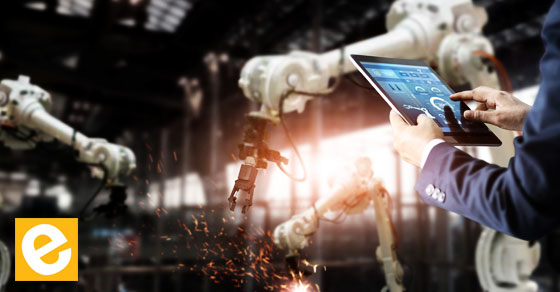
What an Artificial Intelligence Future Might Be Like in Construction
Are you of the camp that believes artificial intelligence future is humanity’s biggest threat? Artificial intelligence is powerful, but it is still far from having the power to destroy humankind. In fact, artificial intelligence delivers are tremendous opportunity to improve construction and overcome many of its current challenges.
Table of Contents
Skilled labor shortage
With the demand for construction services increasing, many construction firms are experiencing a shortage of labor. According to the Bureau of Labor statistics, employers are looking to fill an average of nearly 225,000 construction jobs each month. With the shortage of workers, artificial intelligence via robotics and self-driving machines could help to fill the gap.
Construction companies can utilize autonomous or remote-controlled construction equipment to perform site prep at a rate much quicker. Laser scanners and aerial imaging via drones create a 3D model and site development plan. The autonomous vehicles are equipped with sensors, cameras, and GPS. Real-time data from the autonomous vehicle combined with the 3D model and site development plan to provide instruction to the equipment. This would enable the excavation team to complete site work in a shortened timeframe.

Aging workforce
A contributing factor in the labor shortage is the aging workforce. The average age of construction worker is 41, which is the same age as the traditional workforce. However, the difference is the physical nature of the work in construction. It is back breaking work. Injuries on older workers tend to be more severe and the recovery much longer.
Robotics such as the bricklaying robot by Construction Robotics automates the repetitive task of lifting and placing bricks. Working in conjunction with the mason, the automation increased productivity by 3-5x and reduces lifting by 80%. As the construction industry grapples with an aging workforce, this allows workers to work in construction without the backbreaking manual labor.
Safety
Construction work brings with it lots of hazards making it the industry with the highest fatal injury rate. Because of this high risk to death and injury, companies enact several risk mitigation strategies. Regular safety meetings and following safety protocols help companies take appropriate steps to avoid hazards. As much as employees follow safety procedures, artificial intelligence systems can detect safety violations.
Construction project managers and safety managers can utilize the vast amount of photos and videos captured on the jobsite for more than just to document activity and progress. Smartvid.io scans through the hundreds of photos and videos from across several jobsites to identify potential safety risks. The system would flag images in which personnel are missing protective equipment or proper ladder usage. Without artificial intelligence, it would literally take safety managers hundreds of hours to sift through those photos, and they would likely still miss those violations. Artificial intelligence promotes a proactive safety culture to identify unsafe practices.
Project performance
According to KPMG, 69% of owners say poor contractor performance is the single biggest reason for project performance. Naturally, this occurs because on large commercial projects there are hundreds of subcontractors managing thousands of open issues. Diligent Superintendents must closely monitor all the subs and issues to ensure the project costs and schedule are under control. If all that information is digitized, then artificial intelligence can be used to gather all the information regards to issues. Machine learning helps develop risk factors so that project managers and superintendents can focus on items that cause the most risk.
Autodesk’s Project IQ pilot program analyzes project data to proactively identify and manage risk on the jobsite. On a project level, it can identify and prioritize the top issues to address. On a company level, it can determine if specific contractors are continually posing a high risk and underperforming on multiple projects.
Scheduling
Developing a construction schedule can be a complex and time consuming process. Many schedulers utilize historical data to determine an approximate project schedule. There are many different theories and methods to determine the optimal schedule. Then as the project progresses and issues arise, the schedule shifts.
Alice Technologies leverages artificial intelligence to take the complexity out of scheduling. Using a BIM, construction knowledge and rules of the project team, ALICE develops an optimized schedule in minutes. As the project progresses, the team enters the actual information for ALICE to quickly adjust the schedule as needed.
Productivity
According to McKinsey Global, productivity in manufacturing has nearly doubled whereas construction productivity has remained flat. There are many several internal and external reasons for this. However, there are many instances of lost productivity on the jobsite that delays progress on projects and causes productivity to remain flat. Tracking productivity in real-time empowers Project Managers and Superintendents to act proactively to keep productivity levels on track to meet cost and schedule estimate. However, it would take hours at the end of each day for a superintendent to walk the jobsite and document progress of the work of all subcontractors.
At the end of the day, construction managers can utilize drones and rovers to scan the jobsite and document progress. Doxel develops a 360-degree scan of the area to capture measure quantities and components installed. Tracking progress against the schedule can provide alerts when crew productivity falls behind thresholds.
Resources: